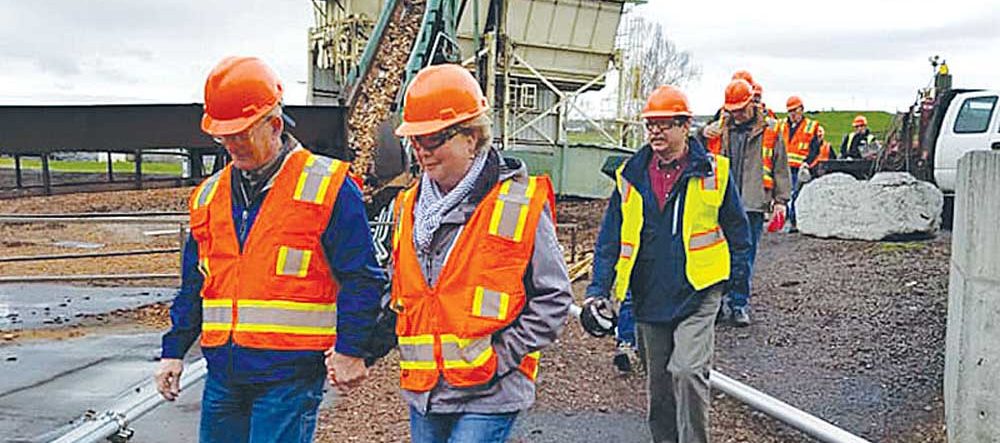State says fire risk map didn’t affect insurance
Published 7:53 am Monday, August 15, 2022
Oregon insurance companies haven’t used, and don’t plan to use, a controversial state wildfire risk map in determining coverage or premium costs, according to a survey a state agency released on Friday, Aug. 12.
The survey results counter one of the complaints that prompted the Oregon Department of Forestry to withdraw the map released to the public June 30.
Property owners and state lawmakers cited cases in which residents whose property was deemed at high or extreme fire risk on the map had problems with their insurance, including policies that weren’t extended.
But the Oregon Division of Financial Regulation on Friday stated in a press release that “insurance companies in Oregon did not use, and currently have no plans to use, the state wildfire risk map in their decision-making.”
The risk map is part of Senate Bill 762, a 2021 bill that the Legislature passed and Oregon Gov. Kate Brown signed into law.
The bill addresses multiple issues related to wildfires in the state, including wildfire prevention and protecting rural properties from fire. The bill required the state to draw a map, by June 30, 2022, showing the wildfire risk for each of Oregon’s 1.8 million tax lots.
The Oregon Department of Forestry and Oregon State University collaborated on producing the map, which, in addition to the risk level, showed which properties are within what’s known as the wildland-urban interface — WUI, the zone in and near forests and rangelands where wildfires are more likely.
Owners of homes that are both within the WUI and rated at high or extreme risk could be required, under Senate Bill 762, to take steps, such as pruning trees, to protect their properties. Those residents could also be required to comply with more stringent building codes.
But it was the concern about how the fire risk map could affect residents’ insurance that prompted many complaints, including from Baker County’s two state legislators, Sen. Lynn Findley, R-Vale, and Rep. Mark Owens, R-Crane.
State Forester Cal Mukumoto announced on Aug. 3 that the map had been withdrawn and would be revised.
Mukumoto said the state had not been aggressive enough in notifying the public about the map and soliciting public comments about it.
As for the contentions about the map influencing insurance companies, state officials say those are unfounded.
According to the Division of Financial Regulation, before the state released the map June 30, insurance company officials told the state, in what the press released described as “informal discussions,” that they did not intend to use the upcoming map.
On Aug. 2, after hearing concerns from residents that the risk map was affecting insurance coverage, the state made a formal inquiry to insurance companies, which they are required by state law to answer truthfully, according to the press release.
The state inquiry asked the nearly 150 insurance companies that offer homeowner coverage in Oregon to answer these questions:
• Does the company use the state wildfire map for rating or underwriting?
(Rating determines premium costs, and underwriting is the process of assessing the risk of offering a policy.)
• Does the company use the state wildfire map for any other purposes?
• Does the company plan to use the state wildfire map for any purpose in the future?
According to the press release, all companies said they don’t use the map for rating or underwriting, nor do they intend to use it.
The press release also noted that the state has not received any applications for insurance rate changes that include the wildfire risk map as a factor.
“This confirms what we knew: Insurance companies are not using the state wildfire risk map,” Oregon Insurance Commissioner Andrew Stolfi said in the press release. “Insurance companies have been using their own risk maps and other robust risk management tools to assess wildfire risk for years in making rating and underwriting decisions. We believe there has been confusion between decisions based on insurers’ continued use of their own tools, including their own risk maps, and the discussions on the new state wildfire risk map. We encourage insurers and agents to be careful in how they describe underwriting and rating decisions.”
Consumers who have questions or complaints about insurance can contact the Division of Financial Regulation’s consumer advocacy hotline at 888-877-4894 (toll-free) or file a complaint online at dfr.oregon.gov.
On Thursday, Aug. 11, the Division of Financial Regulation issued a bulletin, signed by Stolfi, to all insurance companies selling homeowner policies citing the concerns about companies using the wildfire risk map.
The bulletin stated that although companies had denied using the map, “it may be a violation of the Insurance Code to falsely attribute rate increases or decisions to cancel coverage to the state wildfire risk map.”
“It is extremely important that consumers receive accurate information about decisions made with respect to their polices,” the bulletin states.
Two local insurance agents say the state’s recently rescinded wildfire map didn’t affect their policies for properties in high or extreme risk.
Mike Clarke of Clarke and Clarke Insurance in Baker City said he believes the new state map is not associated with any recent change in policies or premiums.
He said insurance companies often use their own mapping systems or partner with third party mapping companies to assess wildfire risk.
“This map just came out, but the companies have been really looking at this (assessing wildfire risk) for a while,” Clarke said.
Clarke acknowledged that increasing wildfire risk has forced him to shift clients to different companies in recent years, but the release of the state map on June 30, though it publicized an issue insurance companies have already been dealing with, didn’t change their methodology
“They’ve had their own ways of doing this for years,” he said.
Daniel Holtz, an insurance agent at Wheatland Insurance, said the state risk map was similar to other assessment tools he’s seen in the past, and in turn, didn’t change the way he thought about assessing wildfire risk.
“It’s just a reflection of what’s already been in the works by insurance companies for a long time,” Holtz said.
— Clayton Franke, Baker City Herald









